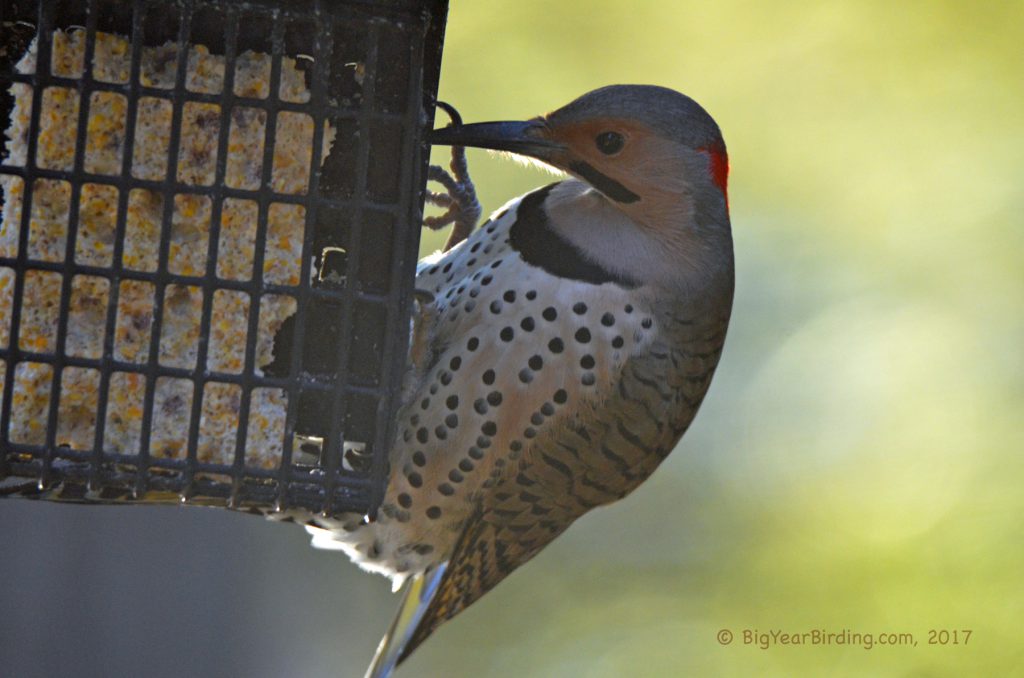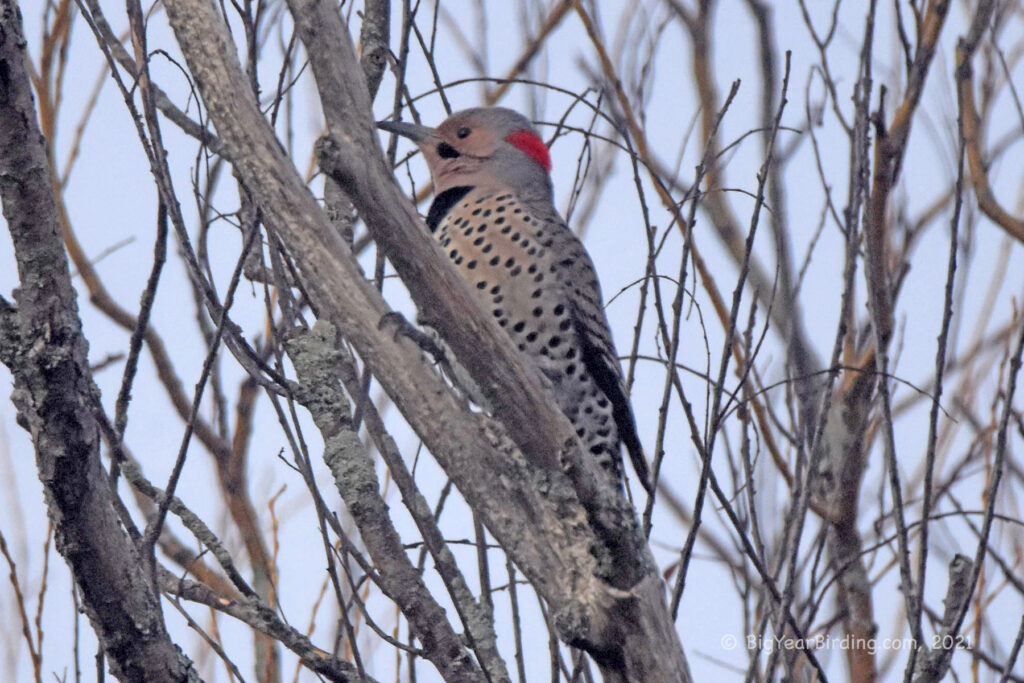
The Northern Flicker (Colaptes auratus) is a medium-sized woodpecker that can reach lengths of 12 to 14 inches (30 to 36 cm) and weigh between 4 to 6 ounces (110 to 170 g). This species is characterized by its distinctive black bib, brown crown and back, and white rump, as well as a distinctive white stripe on the back of the neck. The Northern Flicker also has a brown-streaked underbelly, with a yellow or red patch on the nape of its neck, depending on the subspecies.

One of the most recognizable field marks of the Northern Flicker is its striking flight pattern. This species has a slow, undulating flight that can be easily differentiated from other woodpeckers. In addition, the Northern Flicker has a loud, rolling call that is often used to announce its presence in an area. This call can be heard for long distances, making it easy for bird watchers to locate this species.
The Northern Flicker is a migratory species, with birds from northern regions of the United States and Canada traveling south for the winter. During the spring and summer months, these birds can be found in wooded areas, forests, and parks throughout the United States and Canada. During the winter months, they can be found in parts of Mexico, Central America, and the Caribbean.

The Northern Flicker feeds on a variety of foods, including ants, beetles, caterpillars, and other insects, as well as nuts, seeds, and fruits. This species is known for its unique feeding behavior, as it uses its long, barbed tongue to extract insects from crevices in trees. Northern Flickers are also known to forage on the ground, making them one of the few woodpeckers that do not always feed in trees.
In conclusion, the Northern Flicker is a distinctive and easily recognizable woodpecker that is found throughout much of North America. With its distinctive field marks and loud call, this species is a popular bird for bird watchers and nature enthusiasts. Its unique feeding habits, migration patterns, and the slow, undulating flight pattern, make the Northern Flicker a fascinating species to observe and study.

